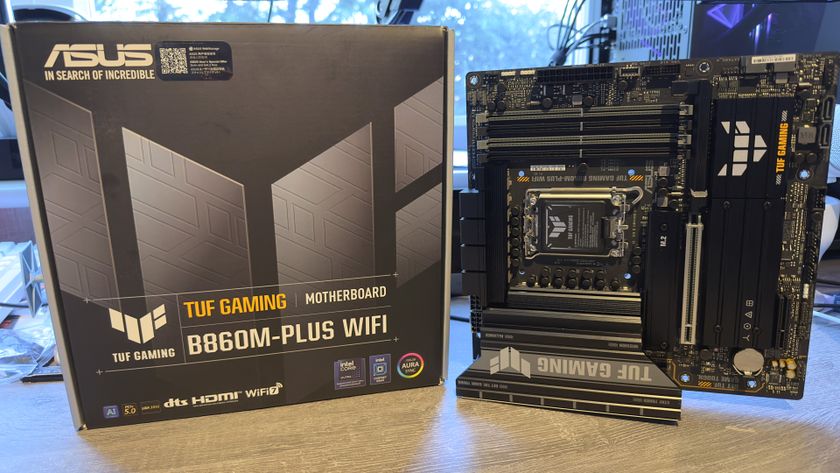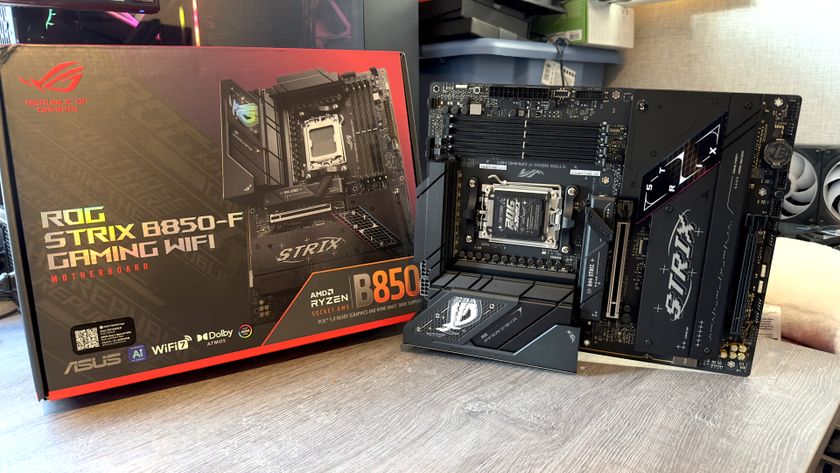Motherboards with 'Killer' network adapters aren't worth your money
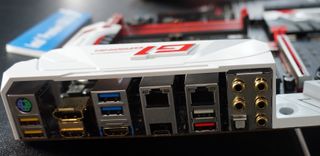
You’ve seen the ads. You’re shopping for a motherboard, and you don't care much about its Ethernet ports, so long as it has them. But you’re offered a confusing, jargon-filled menu of specialized gaming network “solutions.” These exotic hardware and software combos promise performance beyond what mundane Ethernet alone can provide, using various tricks: adding additional RJ 45 ports, combining Wi-Fi with wired throughput, and managing network traffic to give preferred processes priority bandwidth. Best part, they are cheaper than their plain-Jane Intel counterparts.
Sounds perfect, right?
The truth is less clear cut. The idea behind gaming oriented NICs (network interface controllers) seems great: improve performance by dedicating the wired connection to priority game traffic. But from what we've seen in our testing, it simply doesn't make the dramatic difference the advertising claims. If you're buying a premium motherboard expressly for the "gaming" networking features, you'd be better off spending that money elsewhere.

Testing Killer networking
Picking a motherboard with the right feature list for this test was easy. MSI’s latest X99 powerhouse, the GODLIKE Gaming motherboard, sports not one but two gigabit Ethernet ports and tri-band Wi-Fi, all tied together by the ACK software package that’s designed to combine them and manage throughput. Qualcomm 802.11 AC wireless and Atheros Killer Ethernet form the “Killer DoubleShot-X3 Pro,” as it’s called. Long-time gamers might remember this technology from different manufacturers over the years, but the concept remains the same.
Hardware-wise, there’s nothing inherently wrong here. Although the specs still favor Intel in terms of driver polish, DPC latency and extended features, those solutions are also more expensive. Intel parts use less power than competitors’ designs and offer substantial performance benefits as packet sizes drop. At 256K and smaller, which is where most network gaming takes place, Intel NICs start to outdistance Killer E2200 based solutions with throughput speeds up to 50% greater (more on this below). While you won’t increase the gigabit speed limit (most networking hardware today tops out at a gigabit), you’ll be able to reach it far more easily because of this efficiency.
Nevertheless, it’s easy to make a case for Atheros on features per dollar. The Killer package may not be as polished as Intel’s networking products, but you get either Wi-Fi or an extra Ethernet port for less money. Pretty good deal, when taken as a set of separate controllers.
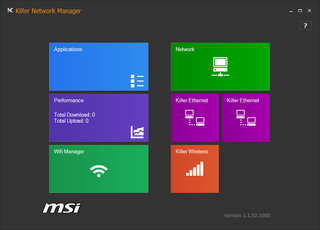
The problem comes from the extended driver package for gamers that tries to combine these separate controllers via the Killer network manager. This adds bandwidth control and network priority rules to the mix and allows simultaneous use of all network controllers to assist with routing.
The biggest gaming news, reviews and hardware deals
Keep up to date with the most important stories and the best deals, as picked by the PC Gamer team.
To simplify setup, easy-to-download updates for the manager’s internal database are available at the touch of a button. This is meant to ensure the latest games and important software get fast-lane bandwidth privileges. Everything seems to install and work smoothly, but test results were less optimistic.
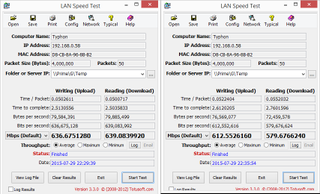
To test Killer’s DoubleShot claims, I downloaded the latest version of the manager software and installed it onto a freshly imaged Windows 8.1 system. I tried out a bunch of high-end routers, including ASUS’s RT-3200AC, Netgear’s Nighthawk 7000 and Apple’s Airport Extreme along with a variety of network configurations, but the latency and bandwidth refused to budge from an observed, real-world 110 MB/s—aka the same reference results produced using one of the motherboard’s Ethernet controllers with just the bare network driver.
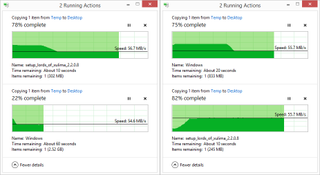
With a single exception, no tests or combination of settings made any difference, even when two or more separate local servers were accessed for copy operations, a best-case scenario configuration that bypasses some bandwidth limits.
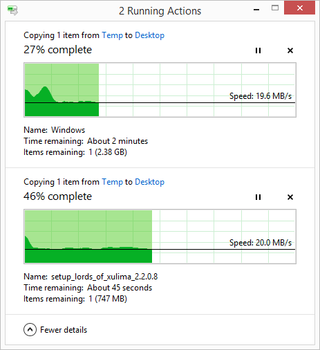
Without rule adjustments, file copy operations get routed off to Wi-Fi where they languish at low speeds. This is the experience out of the box.
That exception wasn’t a flattering one either. When run with the latest downloaded rules, network file copy operations are shunted to Wi-Fi in a fruitless quest to preserve network speed, even when no high-priority network tasks are in evidence. This predictably results in slower overall operation and produces some embarrassing results, especially in general use, with no measurable advantages gained in return.
Gaming results in the real world shadowed the benchmarks closely. Both Left for Dead 2 and CS:GO show no dramatic differences in server ping times or gaming experience beyond normal network variation.
Where’s the performance? What’s really going on?
How is it possible that in this ideal environment, improvements were so difficult to find? The reality is that bandwidth limitations outside the computer, and thus control of the Killer Network Manager, are almost always responsible for the bottlenecks in online gaming.
For example, ISP speeds are just a fraction of home network bandwidth or a server attached to a network with a single gigabit NIC (gigabit fiber is as fast as it gets for most, and your typical cable or DSL connection is far slower at 100 megabits or less). Even on a LAN, most router ports are limited to the speed of gigabit Ethernet as are the local servers' Ethernet cards themselves. You can’t pull more bandwidth than your server or network can push.
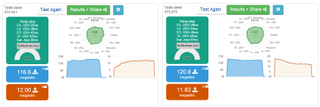
Since a single network process can’t be split between multiple controllers, these solutions presuppose a gamer is running multiple bandwidth-intensive processes in the background that need sharing in the first place, a habit that strategy or casual gamers may employ but almost all performance gamers avoid. Torrenting files while playing a shooter or MOBA is ill-advised if you care about performance, and it’ll probably be reflected in your own ping and your score at the end of a match. In any case, torrent packages also offer effective bandwidth controls of their own.
Another issue is the mixture of Wi-Fi and wired Ethernet. Yes, you may be able to slightly reduce the load on your wired connection by shunting secondary data over to wi-fi, if you're running background processes. But balancing between asymmetric networking interfaces is notoriously difficult, often causing more problems than it solves, and testing the Killer network manager revealed this remains the case. While networking behemoth Cisco won’t have any sleepless nights, hapless users have already experienced plenty, with support boards packed with problems that all amounted to the same answer—turn it off.
DPC Latency, the Devil’s pause button
So if you can’t stack multiple controllers to improve performance, what can you do? The answer is pretty mundane, and it comes down to drivers.
Although they aren’t as sophisticated as Intel’s offerings, the real problem here isn’t the Atheros hardware, it’s the driver sitting on top of it. Even the mightiest 8-core Intel desktop systems have to deal with an inherent limitation of the Windows task management structure. Badly written drivers can stall an otherwise smoothly operating set of real-time tasks, which are handled by Deferred Procedure Calls (DPC) at the kernel level.
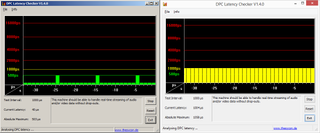
Inefficient drivers co-opt other devices’ DPC time from the single, cooperatively multitasked queue that each CPU is permitted in Windows. This results in drop-outs in audio or video, even when plenty of CPU time and bandwidth are otherwise available. If you’re looking to make a difference in performance with your networking card, low-DPC-latency solutions are where you’ll find it. That generally means Intel, which has the resources to sweat the details.
Middle management downsizing
Is the Killer Network Manager worth it, as a deluxe feature? Despite claims and plenty of promise, no. Besides questionable test results, the software has a long history of annoying users, and while newer packages have filed off some of the sharp edges, I still experienced settings that would not retain changes after reboot and network rules that applied arbitrarily. While competing gaming network managers exist, such as ASUS’s GameFirst, now on its third iteration, don’t expect much better results as all of these solutions share the same external bandwidth limitations that hinder Doubleshot.
Fortunately, there are alternatives. Qualcomm eventually relented and now offers a barebones version of the Atheros LAN and Wi-Fi driver set without the manager included. Take the hint. You can add my voice to the chorus that recommends using it from first install. Don’t waste your time with the Killer Network Manager or DoubleShot. They cause more problems than they solve.
Most Popular






